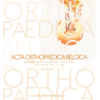Correlations in radiographic and MAKO Total Knee Robotic-Assisted Surgery intraoperative limb coronal alignment
Total knee arthroplasty; robotic-assisted surgery; coronal limb alignment; long leg standing radiographs; MAKO
Published online: Jan 22 2023
Abstract
Robotic-assisted arthroplasty has become increasingly established in recent years. The aim of the study is to determine if intraoperative coronal alignment during robotic-assisted total knee arthroplasty correlates with radiographic alignment. We prospectively com- pared the pre- and postoperative limb alignment values measured on long leg standing radiographs with intraoperative robotic-assisted measurements for 100 patients who underwent primary total knee arthroplasty. Two-tailed bivariate Pearson correla- tions were performed to evaluate the strength of the association between radiographic and robotic- assisted alignment. The intraclass correlation coeffi- cient (ICC) was used to estimate interrater reliability. There was a male/female ratio of 1.16 and the mean age was 67 years (range 42-88). Robotic-assisted measurements slightly overestimated the degree of varus relative to radiographs. Radiographic and robo- tic-assisted measurements were strongly correlated (r = 0.915, p < 0.001) preoperatively, with a difference of 1.6 ± 3.2°. The average measure ICC was 0.996 with a 95% confidence interval from 0.995 to 0.997 (p < 0.001). Postoperatively a bigger difference was measured (3.1° ± 1.9°), comparing radiographic and MAKO alignment. A moderate correlation was ob- served between the postoperative radiographic and MAKO outcome alignment (r = 0.604, p < 0.001). The average measure ICC was 0.977 with a 95% confidence interval from 0.967 to 0.984 (p < 0.001). There is a strong correlation in the preoperative set- ting between radiographic and robotic-assisted lower limb alignment and a moderate correlation in the post-operative setting. The values measured by the MAKO Total Knee application were considerably more in varus.
